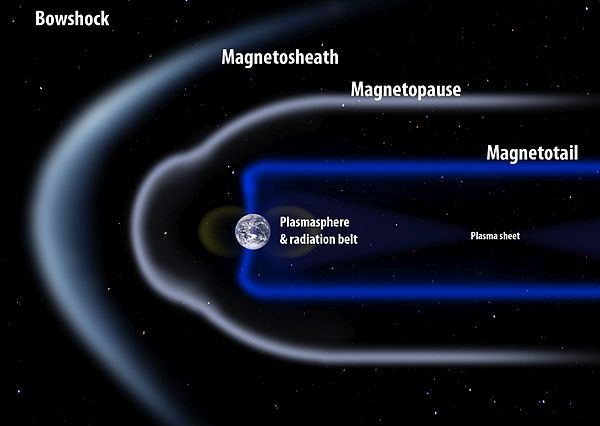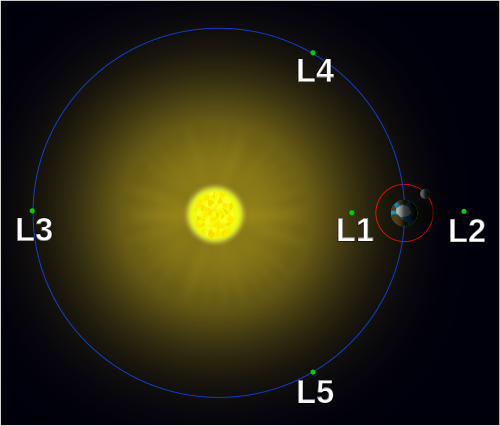Solar wind interaction with Earth
Solar wind, a stream of charged particles (primarily protons and electrons, with a few percent of alpha particles), impinges on Earth with flow velocities of about 400 km/s. Considering that low-frequency wave propagation speeds in the respective plasma medium are a few tens of kilometers per second, the solar wind flow is highly supersonic. However, the Earth's magnetic field prevents the solar wind from getting too close. A pressure balance between the dynamic pressure of the solar wind and the magnetic field pressure of the Earth's magnetic field is achieved at a boundary called magnetopause. It is a boundary between the Earth's magnetosphere and the region occupied by the solar wind plasma and the interplanetary magnetic field, i.e., the farthest place where the terrestrial magnetic field reaches. Generally, the location of the magnetopause is not stable, but it moves depending on many different factors, most importantly due to the variations in the incoming solar wind. Considering that the solar wind speed is vastly supersonic, an additional boundary ("bow shock") is formed upstream the magnetopause, where the solar wind is abruptly slowed down and heated. The region between the bow shock and the magnetopause, filled with this slowed and heated solar wind plasma, is called magnetosheath.


A major focus of our research group is to use in-situ measured satellite data in the vicinity of magnetopause and bow shock to better understand the variation of their locations, shapes, and properties on the state of the incoming solar wind. This is determined based on spacecraft monitoring solar wind properties at Lagrangian L1 point, maintaining the same relative position with respect to the Sun and Earth.
